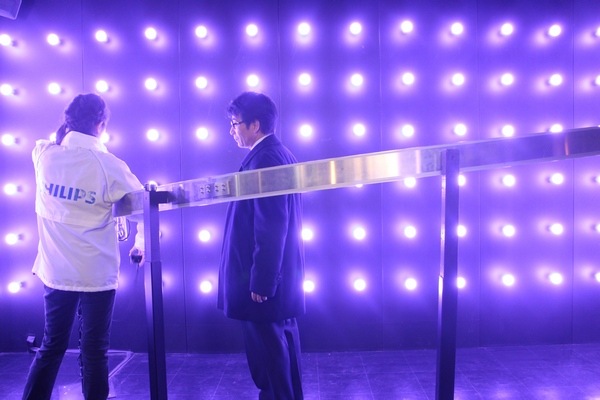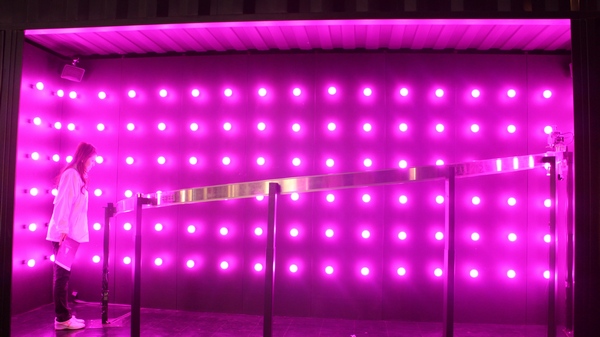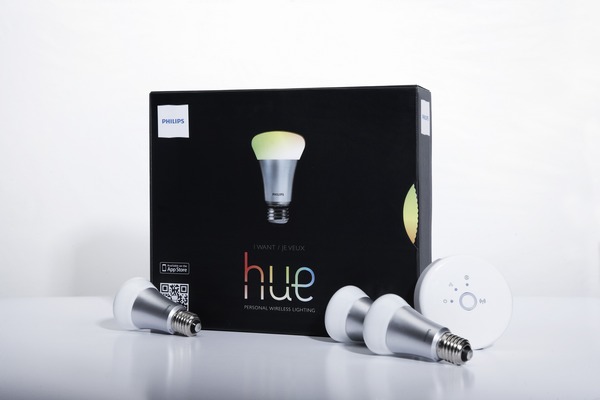Tucked in the far corner of Lighting Japan 2014 show grounds last week, Philips Lighting booth attracted a huge crowd of visitors with its colorful Philips Hue LED bulb display. The company delivered a clear message of continuing its global strategy of promoting the colorful bulb at the show through a large cargo box display installed with 150 Philips Hue bulbs.
 |
 |
|
Top: A visitor (right) steps into the Philips Hue lighting booth to experience the shifting colors and have a photo taken. Philips Lighting staff (left) prepares the device. Bottom: Philips Lighting staff (left) shows the visitor (right) the finished lighting result. (LEDinside) |
Visitors stood in the cargo box to experience the colorful bulbs controlled by smartphones and tablets transited without a glitch into different shades of color. “One Philips Hue controller can manage some 50 lamps, so we have about three controllers in there,” said Kenichi Hara, Key Account Manager, Lighting Division, Special Lighting, Philips Electronics Japan. Hara went out to point out promotion of Philips Hue was in line with the company’s global marketing plans. The bulb has been highlighted at several electronic consumer shows this year, including the recent CES 2014.
 |
|
Philips Lighting Japan staff test and check lighting controllers before demonstration. (LEDinside) |
Speaking about the Japanese market for Philips Hue, Hara pointed out the company launched the product in the country last summer. “I think we have sold about 10,000 bulbs so far,” said Hara. “Basically, we are targeting Japanese single men at around 30 years old.” Apparently, the product is being marketed as a device to help single men create better dating atmospheres at home.
 |
|
Philips Hue bulb launched in 2012 continues to be the company's major focus this year. (Photo Courtesy of Philips) |
The company also has its eyes set on bringing smart controllers to other applications. Philips hopes that in the future smart controllers will also be extended into OLED devices, or even to control electricity, said Hara.





 CN
TW
EN
CN
TW
EN






